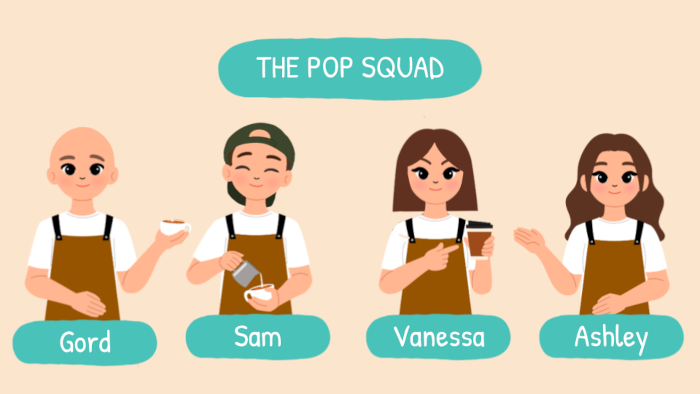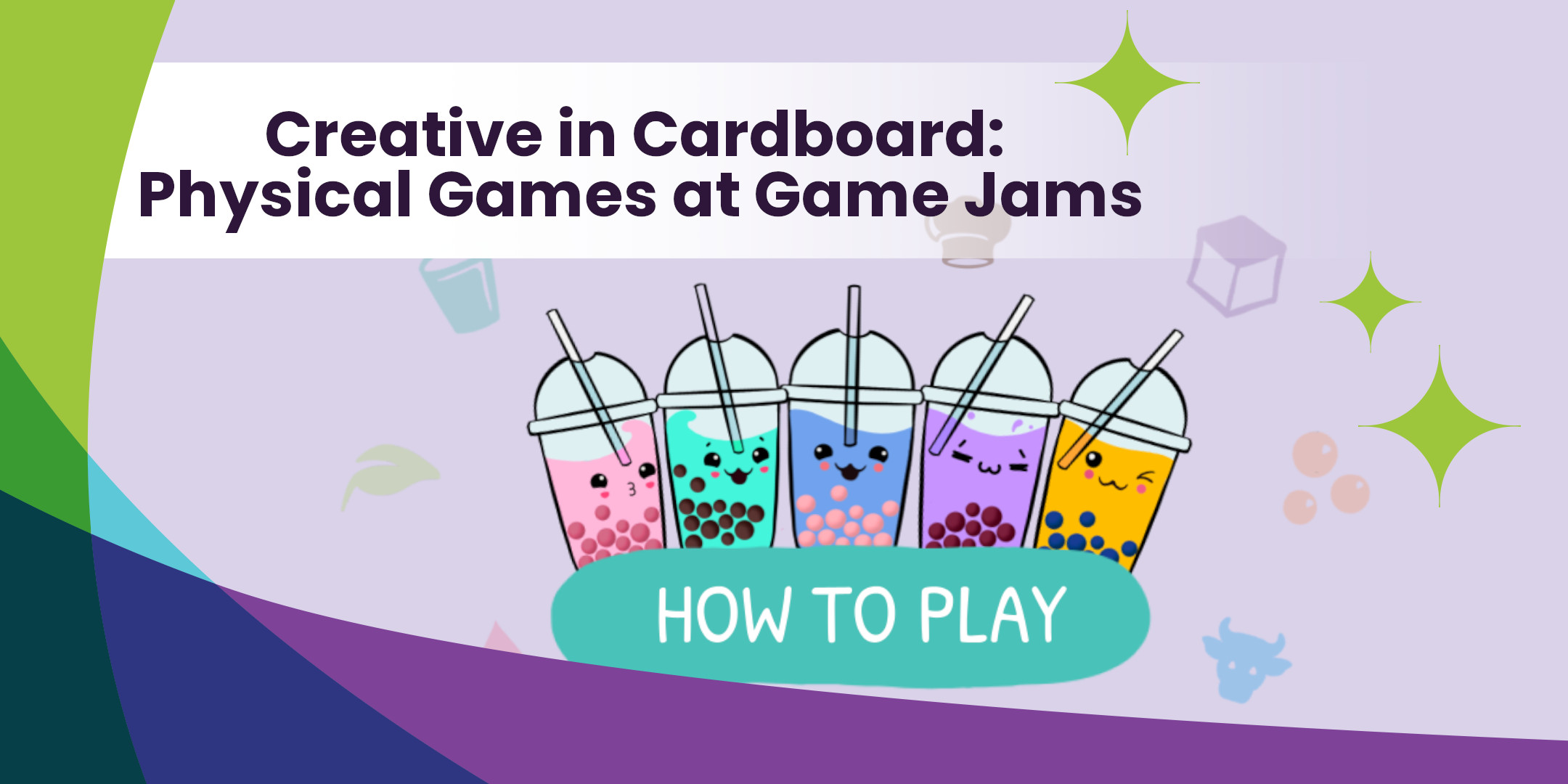Creative in Cardboard
When we think of game development, we often picture lines of code, glowing screens, and digital prototypes. But at this year’s Global Game Jam Okanagan, one creator reminded us that some of the most engaging, social, and creative games don’t need power cords or pixels at all.
Sam is a three-time participant in OGDA game jams who brought a refreshingly tactile experience to the table with his newest card game: Bobarista Battles, a competitive party game themed around bubble tea. With it, Sam proved that physical games offer just as much room for creativity, challenge, and collaboration as their digital counterparts.
Bubbling with Ideas
Faced with the jam’s theme, “bubble,” Sam and his team decided not to get literal, but thematic. Rather than popping mechanics or water physics, Bobarista Battles centered around competitive bubble tea-making.
“Usually I am very quick to have an idea but, bubble really had me needing to really brainstorm with my team. From there we had to then create mechanisms around the theme of bubble tea, but that came easier as we honed down what our premise was. Funny enough, having such a broad theme isn’t as easy as having something more restrictive.”

Although Bobarista Battles was one of the most complete games coming out of this year’s global game jam, Sam doesn’t have plans to take the game to market, but he does plan to play it with friends, see how it holds up, and maybe tweak it just for fun. For him, “…there is something nice about creating something and then not always having to do something with it.”
Why Physical Games Matter
Sam is one of the participants consistently bringing tabletop game design to OGDA jams, “of the last 3 jams I went to, only 5 board games were created, and I was a part of 3 of those games. I would love to see what other physical designers do (at jams)!”
There are some of the benefits of working on physical games at a game jam; unlike digital games, where you often need specialized software and technical skills, physical games can begin with simple materials: index cards, paper, tokens, dice. You can prototype immediately, iterate quickly, and get direct feedback by watching people play in real time. “You may feel like you can’t contribute because you don’t know or you feel like your skills don’t apply, but they do!” he said, “I am a musician and an accountant, and my team made a board game this weekend.”
His experience proves that game jams aren’t just for coders or digital artists. Creativity wears many hats, and trying out physical media may be a fun challenge for those who are more experienced in the digital space.
Advice from a Veteran Jammer
Sam shared that “I realize I’ve learned techniques and ways to contribute and add to the overall experience of the game and my confidence has increased tremendously with each jam that I have attended.”
As someone who’s now completed three jams, Sam has some advice for newcomers:
- Don’t let fear stop you. Once you’re in the door and meet your team, all the anxiety fades.
- Bring a friend if you can. It makes that first step easier.
- Trust your weird skills. You might not think your background fits until your team needs exactly what you bring.
Whether you’re a professional or novice, into digital games or physical, there’s room for you in the Okanagan game dev community.
“The most rewarding part of a game jam is when someone comes up to you and asks to play your game. You may sit there thinking you didn’t do as well as you thought and then someone …comes up to you, introduces themselves and then says “please let me play your game! As soon as I saw what you made, I had to try it!” That feeling is something you can’t describe. It is incredible for someone to be fascinated and interested in something you put your heart and soul into.”

